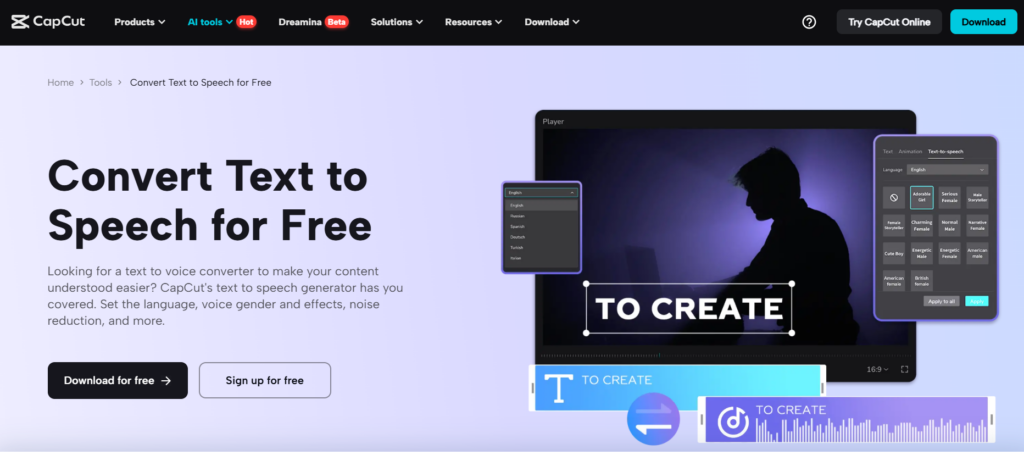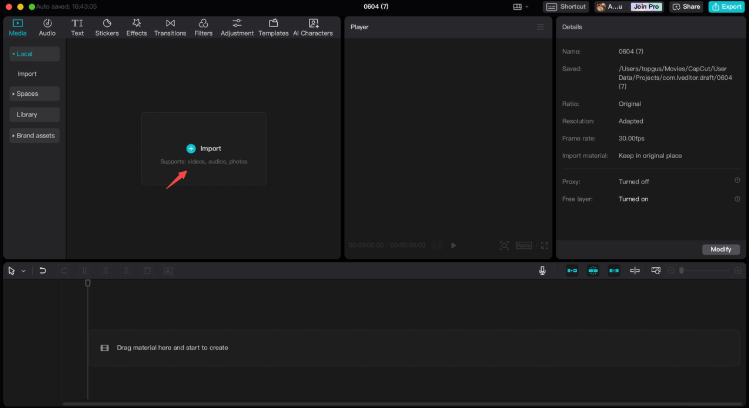Table of Contents
ToggleWhen selecting the best text-to-speech (TTS) voice for HR communications and employee engagement, it’s essential to choose a voice that aligns with your company’s culture and enhances the employee experience. A clear, natural, and professional-sounding voice can make automated announcements, training materials, and HR notifications more engaging and easier to understand. Whether it’s for onboarding new hires, delivering company updates, or providing self-service HR assistance, a well-chosen TTS voice ensures that employees feel valued and informed. Factors such as tone, accent, language, personality, age, gender, and emotional expressiveness should be considered to create an inclusive and effective communication experience. With advancements in AI and video editing software, businesses can now create a unique and consistent voice using text-to-speech technology.

How Can HR Managers Benefit from Text-to-Speech Technology?
HR managers can benefit from text-to-speech (TTS) tools in various ways to enhance communication, improve accessibility, and streamline processes. Here are some key applications:
- Employee Training & Onboarding: TTS can convert training materials, policy documents, and onboarding guides into audio, making it easier for employees to learn on the go or accommodate different learning preferences.
- HR Announcements & Notifications: Automated voice messages can be used for important HR updates, event reminders, and policy changes, ensuring employees receive critical information clearly and engagingly.
- Accessibility & Inclusivity: TTS tools help organizations create a more inclusive workplace by providing audio versions of text-based content for employees with visual impairments or those who prefer auditory learning.
- Automated HR Chatbots & Self-Service Assistance: TTS-enabled virtual assistants can answer common HR-related queries, such as leave policies, payroll information, and benefits enrollment, reducing the workload on HR teams.
- Employee Engagement & Well-Being Initiatives: HR can use TTS tools to deliver wellness tips, motivational messages, and mental health resources in an interactive and engaging way.
- Multilingual Support: Global companies can use TTS to provide HR communications in multiple languages, ensuring that all employees receive consistent and understandable information regardless of their native language.
- Survey & Feedback Collection: TTS can be used to read out employee surveys and feedback requests, increasing participation rates by making the process more accessible and convenient.
Factors to Consider When Selecting a Text-to-Speech Voice
Tone & Personality
The voice you choose should reflect your brand’s identity. A corporate brand may require a professional and authoritative voice, while a lifestyle brand might opt for something friendly and conversational. Tones can range from warm and inviting to serious and formal. A tech brand may benefit from a futuristic and innovative voice, whereas an entertainment brand might need something energetic and engaging.
Voice Gender & Age
Selecting between a male, female, or neutral voice depends on the brand’s target audience and industry. For instance, a female voice often conveys warmth and approachability, while a male voice can project authority and confidence. Some brands may opt for a neutral voice, ensuring inclusivity and versatility across different demographics. Age also matters; younger voices can sound energetic, while mature voices exude experience and reliability.
Language & Accent
If your brand has a global reach, choosing a voice that aligns with your audience’s native language is essential. Accents also influence perception, some brands use regional accents to connect better with local audiences. For instance, a British accent might convey sophistication, while an American accent could feel more casual and direct.
Customization & AI Adjustments
Advanced AI-powered text to speech allows you to adjust pitch, speed, and emotional tone. This customization ensures your brand sounds unique and engaging. You can modify the voice to match different content types calm and steady for instructional videos, energetic for promotional material, or empathetic for customer support messages.
How to Convert Text to Speech? – Step by Step
Step 1: Install CapCut Desktop and Import Your Files

To begin, download CapCut’s “Video Editor for Desktop” from the official website. Once installed, log in and create a new project. Click the “Import” button to upload your video file or manually enter text for conversion. This step lays the foundation for seamless text integration. The software supports multiple file formats, making it easy to integrate different types of media.

Step 2: Convert text to speech
You can click “Text” and select the “Text to speech” option. CapCut PC provides various AI voice options, including Cute Boy, Confident Male, and more. Adjust pitch, speed, and tone to suit your brand’s style. You can preview different settings before finalizing. Enhance your video further with animations, captions, and transitions for a professional touch. You can also use an AI caption generator to create subtitles.

Step 3: Export and Share Your Final Video
After perfecting the voice and effects, click on the Export tab in the top right corner and select export settings such as resolution and format (MP4, WAV, etc.). Before uploading to platforms like TikTok or YouTube, ensure that all content complies with copyright regulations. This final step ensures your brand voice reaches your audience effectively.

Frequently Asked Questions (FAQ)
What is Text-to-Speech (TTS) technology, and how does it work?
Text-to-Speech (TTS) technology converts written text into natural-sounding spoken audio using advanced AI and machine learning models. It analyzes text structure, punctuation, and linguistic context to generate speech that mimics human tone, rhythm, and emotion. Modern TTS tools use neural networks to create voices that sound remarkably realistic, ideal for HR communications, onboarding, and employee engagement, where clarity and connection matter most.
Why should HR departments use Text-to-Speech for internal communications?
HR departments benefit from TTS because it enhances communication accessibility and engagement across the organization. Whether it’s for training modules, onboarding materials, policy updates, or wellness campaigns, a well-chosen TTS voice ensures information is delivered clearly and consistently. It saves time, reduces repetitive manual communication tasks, and makes it easier to reach a diverse, multilingual workforce.
How can TTS improve employee engagement and inclusivity?
TTS helps employees feel more connected and included by offering an additional way to consume information, especially for those with visual impairments or who prefer listening over reading. It supports multiple languages and accents, helping global teams understand HR content in their native tongue. Furthermore, when HR messages sound warm and natural, employees are more likely to feel emotionally engaged and valued.
What should companies consider when choosing a TTS voice?
When selecting a TTS voice, companies should focus on factors like tone, personality, gender, age, language, and accent. The voice should reflect the brand’s culture, for example, a calm, empathetic voice for HR wellness messages or a confident tone for company-wide announcements. Businesses should also test multiple options to see which resonates most with employees and aligns with organizational values.
Can Text-to-Speech replace human voiceovers in HR videos and training?
While TTS can’t fully replace the emotional depth of human voiceovers, it’s a cost-effective and time-saving solution for most HR needs. AI voices are now highly realistic and customizable, making them suitable for tutorials, announcements, and e-learning. For emotionally sensitive topics (e.g., mental health or diversity training), a mix of human narration and TTS can strike the perfect balance between efficiency and empathy.
How does TTS technology support global and remote teams?
TTS bridges communication gaps in multilingual and remote workplaces by converting HR materials into different languages and accents. It ensures all employees, regardless of geography or native language, receive the same information simultaneously. This consistency strengthens inclusivity, minimizes misunderstandings, and creates a unified company voice across borders.
Are AI voices customizable to match brand identity?
Yes. Advanced TTS platforms allow companies to customize voices by adjusting pitch, speed, tone, and emotional expression. Some even offer brand voice cloning, enabling you to create a consistent, signature voice that represents your organization. This personalization makes automated HR messages sound unique, friendly, and aligned with the company’s overall communication style.
What are the best tools to create TTS audio for HR content?
Popular options include CapCut, Murf.ai, and Play.ht, ElevenLabs, and WellSaid Labs. These tools offer lifelike AI voices with multilingual support and intuitive editing features. For HR professionals, CapCut’s Desktop Video Editor is especially useful since it combines text-to-speech with built-in video creation tools, allowing HR teams to produce training and onboarding content quickly and efficiently.
Is Text-to-Speech technology expensive to implement?
Not necessarily. Many modern TTS platforms offer affordable plans based on usage, and some even provide free tiers for small-scale projects. Compared to hiring professional voice actors or producing manual recordings, TTS significantly reduces long-term costs while offering flexibility and scalability for large organizations.
How can companies ensure their TTS usage feels authentic and human?
To maintain authenticity, HR teams should select natural-sounding voices, use conversational phrasing, and adjust emotional tone to suit the message. For example, wellness messages should sound calm and empathetic, while company announcements should be upbeat and confident. Regularly gathering employee feedback also helps fine-tune the tone and improve the overall listening experience.
Conclusion
Selecting the best text-to-speech voice requires attention to tone, language, and customization. A well-chosen voice enhances communication, builds trust, and improves audience engagement. Experimenting with different voice options helps find the perfect fit for different business needs. As AI-powered text-to-speech continues to evolve, brands can access even more realistic and expressive voices. By integrating this technology effectively, businesses can create compelling audio experiences that leave a lasting impact on their audience.
